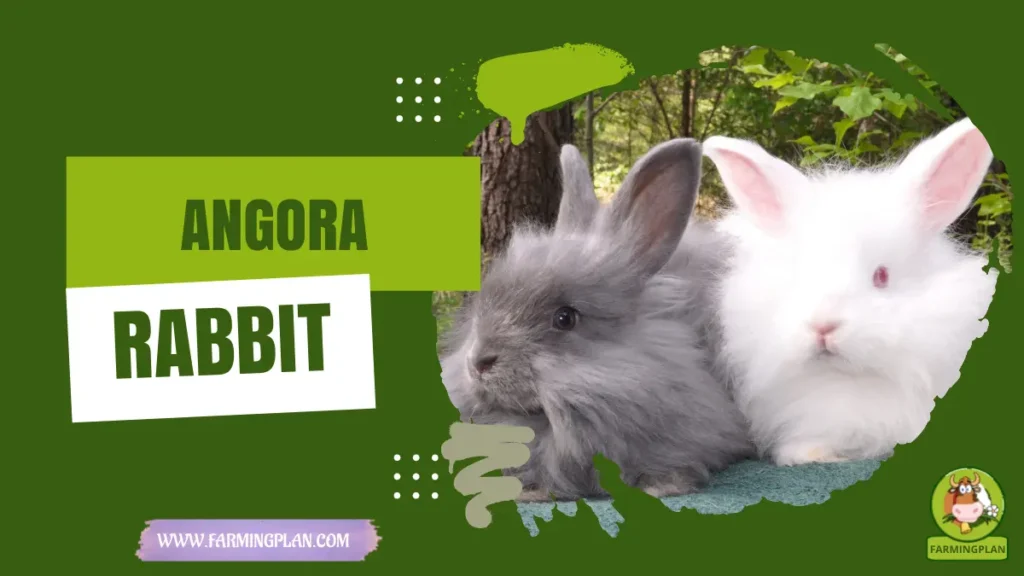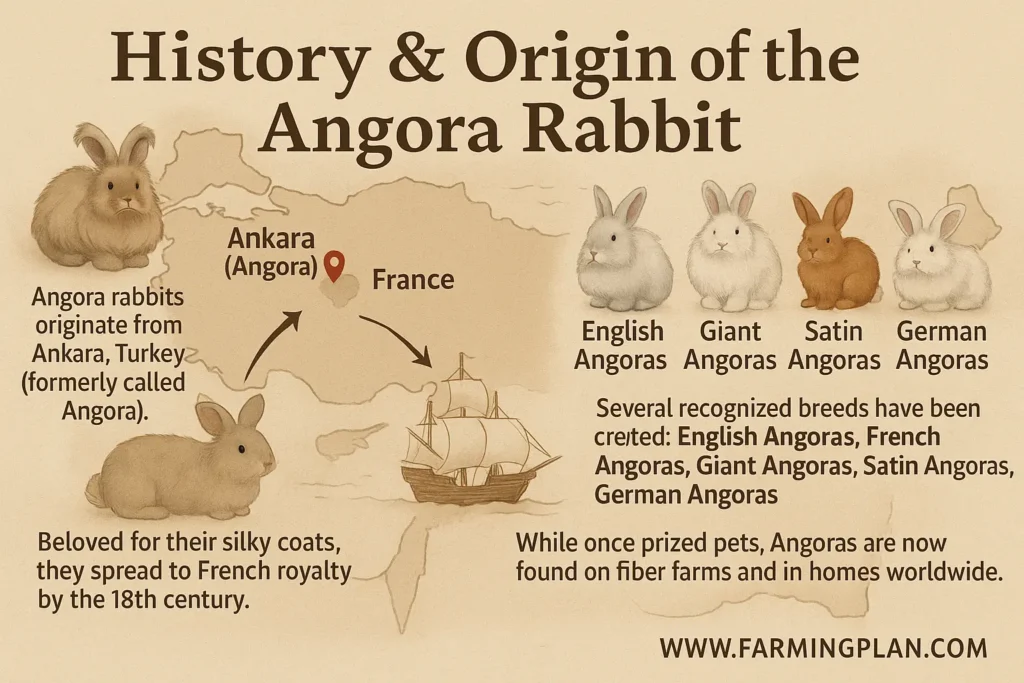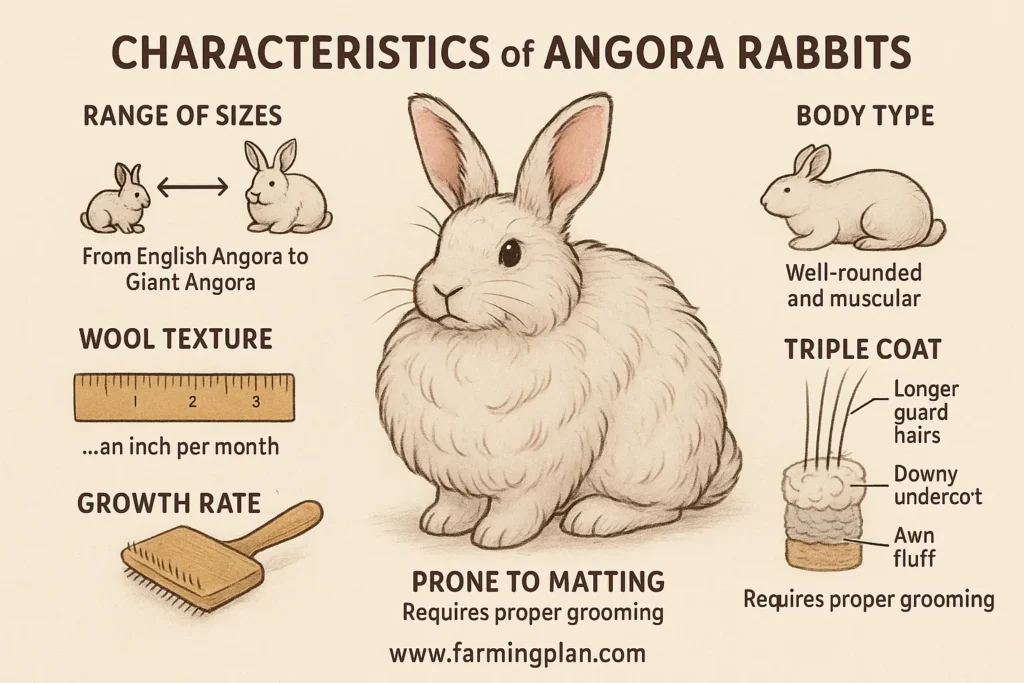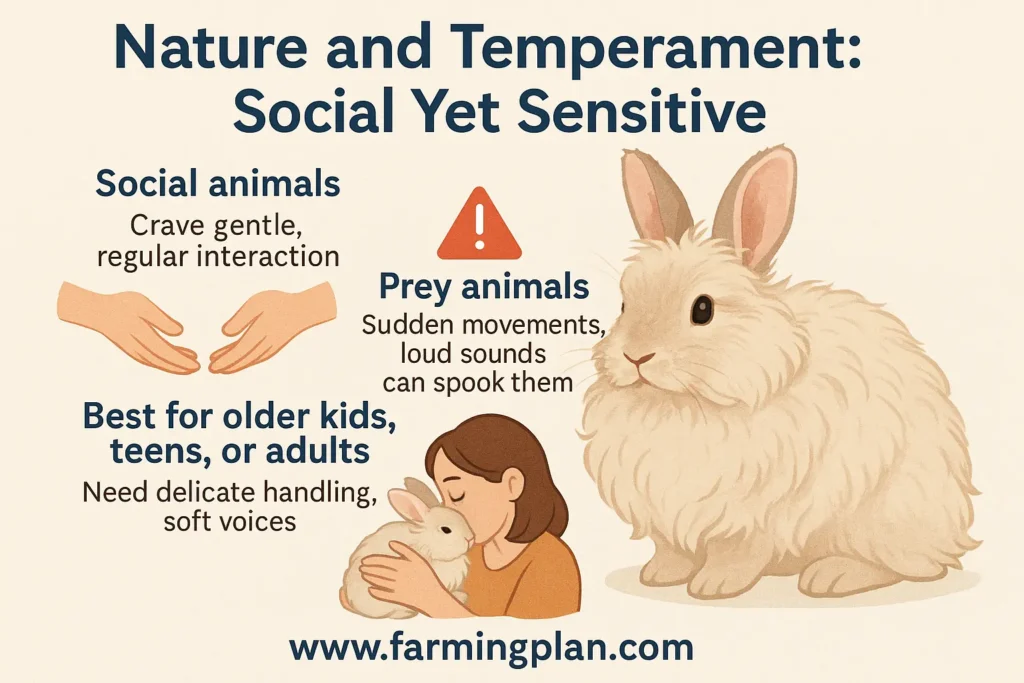If you’ve ever run your fingers through an Angora rabbit’s coat, you know why folks get hooked. These rabbits aren’t just adorable they produce some of the softest, warmest fiber you’ll ever touch. As someone who’s spent years raising these beautiful bunnies, I can tell you that caring for Angora rabbits is equal parts art and routine. Whether you’re into wool production or just love fluffy companions, there’s a lot to learn from grooming routines to dietary needs. And trust me, once you see how much usable fiber one rabbit can give you, you’ll be amazed. Let’s dive into everything you need to know to raise happy, healthy, and productive Angoras.

History & Origin of the Angora Rabbit
Angora rabbits trace their roots all the way back to Ankara, Turkey (once called Angora). These rabbits were so beloved for their silky coats that they quickly made their way into French royalty circles by the 18th century. From there, they spread across Europe and later reached the United States, where breeders started to refine and separate them into different types.

Over the years, breeders created several recognized Angora breeds: English Angoras, French Angoras, Giant Angoras, Satin Angoras, and German Angoras. Each has its own flair when it comes to wool texture, grooming needs, and personality. The American Rabbit Breeders Association (ARBA) recognizes many of these varieties today. While they started as prized pets, Angoras are now a staple on fiber farms and in the homes of passionate rabbit lovers worldwide.
Characteristics of Angora Rabbits
Angora rabbits come in a range of sizes, from the petite English Angora to the hefty Giant Angora. Most have a commercial body type, which is well-rounded and muscular, perfect for wool production. Their wool can grow as fast as an inch per month and often feels like spun silk when handled correctly. The texture, density, and length vary depending on the breed.

One thing to love (and sometimes stress over) is their coats. Angoras typically have triple coats or 2-3 distinct layers the downy undercoat, awn fluff, and longer guard hairs. This combo gives them that luxurious, cloud-like appearance. But those gorgeous coats are also prone to matting if not cared for. Proper grooming not only preserves the usable fiber but also keeps your rabbit healthy and happy.
Nature and Temperament: Social Yet Sensitive
These rabbits may look fancy, but they’re actually down-to-earth little creatures. Angora rabbits are social animals and crave gentle, regular human interaction. I’ve noticed my English Angoras are especially even-tempered. They enjoy being held and brushed (as long as you’re gentle). But don’t forget—they’re prey animals. Sudden movements or loud sounds can spook them easily.

Because of their calm nature, Angoras are a good match for older kids, teens, or adults who understand how to handle pets delicately. They aren’t usually ideal for young children. They need daily attention, soft voices, and hands that know how to hold without squeezing. Once bonded, though, they can be incredibly affectionate and trusting companions.
Read More: American Sable Rabbit: Perfect Pet With A Gentle Heart
Food & Diet: Feeding Angora Rabbits the Right Way
Feeding an Angora rabbit isn’t complicated, but it does take consistency. I stick to a balanced mix of high-quality hay (like Timothy or orchard grass), high-protein rabbit pellets, and fresh greens. You can also add high-protein supplements designed for wool-producing breeds these help keep their coats in tip-top shape.
Watch out for anti-nutrition factors like anti-trypsin compounds found in some processed feeds. These can mess with your rabbit’s digestion. Keep their digestive tract healthy with plenty of fiber, and always make sure they have access to clean water. Treats? A little fruit now and then is fine, but not too much—sugar can cause problems.
Read More: Cashmere Lop Rabbit: The Ultimate Adorable and Devoted Pet
Purpose & Usage: Pets, Fiber, and Shows
Most people raise Angora rabbits for one of three reasons: as a pet, for wool production, or to show. I’ve done all three, and each has its perks. If you’re in it for the wool, Giant and German Angoras are your best bet. They can produce more than a pound of wool per year!
For shows, English and French Angoras shine with their striking appearances and defined coats. Their color depth and coat texture can make or break their score in competitions. And if you’re simply looking for a cuddly, unique pet? Any Angora breed will win your heart just be ready to keep up with the grooming.
Special Features That Make Them Stand Out
Angora rabbits are truly fiber powerhouses, and it all starts with their coat. Their wool is softer and warmer than sheep’s wool, with a silky texture that fiber enthusiasts adore. The combination of fine underwool, awn fluff, and coarse guard hairs gives their fiber an incredibly rich feel. In fact, some of my rabbits produce fiber in the 10–12 micron range, which rivals the softness of high-end cashmere.
And let’s talk color—these rabbits don’t just come in white. Their coats range from soft creams and traditional whites to deep blues, chocolates, and rare chinchilla tones. Even better? Their fiber grows continuously throughout the year. With proper care and a solid grooming routine, I see nearly an inch of growth per month. That means plenty of usable fiber without having to wait for a seasonal molt. It’s what makes them such a valuable asset to any fiber herd.
Read More: Checkered Giant Rabbit: A Gentle Giant Breed
Health Issues & How to Prevent Them
Angora rabbits are pretty hardy, but their dense coats can lead to some tricky issues. One of the most common is wool block—a digestive problem caused by ingesting their own fur. Keep an eye on their poop (yes, really). If it slows down or stops, that’s a red flag.
Other issues include skin mites, matting, and poor coat condition. Regular grooming, a clean cage, and a proper diet go a long way. Use a slicker brush to keep mats away and always have sharp cutting tools for emergency trims. Watch for signs of infestation like excessive scratching or flaky skin, and treat them promptly.
“Good Grooming Equals Good Wool A Slicker Brush And Ten Minutes A Day Keep Mats And Stress Away.”
Step-by-Step Angora Rabbit Farming & Care Guide
Step 1: Setting Up the Right Environment
Start with wire mesh cages or all-wire cages that offer great ventilation and are easy to clean. Place cages in a shaded, quiet area with good airflow. Add a nesting box if you plan to breed, and line the bottom with straw or hay.
Angoras don’t like wet or humid environments, so always keep things dry. I place trays under the cages to collect waste and use bunny poo pellets in the garden—free fertilizer!
Step 2: Daily Routine Essentials
Feed your rabbits every morning with fresh hay, high-protein pellets, and clean water. Allow at least 15–20 minutes of human interaction or supervised roam time.
I do a quick health check each day—make sure eyes are clear, nose isn’t runny, and coat feels clean. Spot-clean the cage and fluff up their bedding.
Step 3: Weekly Grooming and Cleaning
Once a week, deep-clean the cage and sanitize any tools. Brush your rabbit using a slicker brush to remove loose fur and prevent mats.
Take this time to trim nails if needed and inspect for signs of illness. Consistent weekly routines make monthly maintenance way easier.
Step 4: Monthly Maintenance and Shearing
When the coat hits about 2.5 inches, it’s time to shear. I use blunt-tipped scissors or grooming shears and go slow to avoid nicks. This is also when I check their body condition and track wool growth.
Keep fiber in a labeled bag, noting the date and rabbit’s name—helps with fiber testing later. Always store it in a breathable container.
Step 5: Ethical Breeding Tips
If you’re breeding, only use healthy rabbits at the right age (4-6 months minimum). Prepare a nesting box two weeks before the gestation period ends.
Always follow responsible breeder practices—no back-to-back breeding, and always allow recovery time. Happy moms equal healthy litters.
FAQ
How often should I groom my Angora rabbit?
At least three times a week, but daily during molting. Regular grooming prevents painful mats and wool block.
What breed of Angora rabbit produces the most wool?
Giant Angoras and German Angoras are top producers, often yielding over a pound of wool per year.
Can Angora rabbits be kept indoors?
Absolutely! Just ensure they have space, daily attention, and a clean, ventilated area to live in.
When do Angora rabbits start producing usable fiber?
Usually around 3-4 months of age. By six months, they’re producing regularly.
Are Angora rabbits good for beginners?
They can be, as long as you’re ready for the grooming commitment. Start with a breed like French Angoras for a good balance.
Conclusion
Raising Angora rabbits is more than a hobby it’s a lifestyle. Whether you want to collect soft wool, win show ribbons, or just enjoy their calm companionship, these bunnies offer a unique blend of charm and utility. With the right care routine, proper diet, and a loving hand, they can thrive for years. From my experience, what matters most is consistency in grooming, feeding, and bonding. Angoras give back every ounce of care you put into them, wrapped up in the softest fiber you’ll ever feel.

